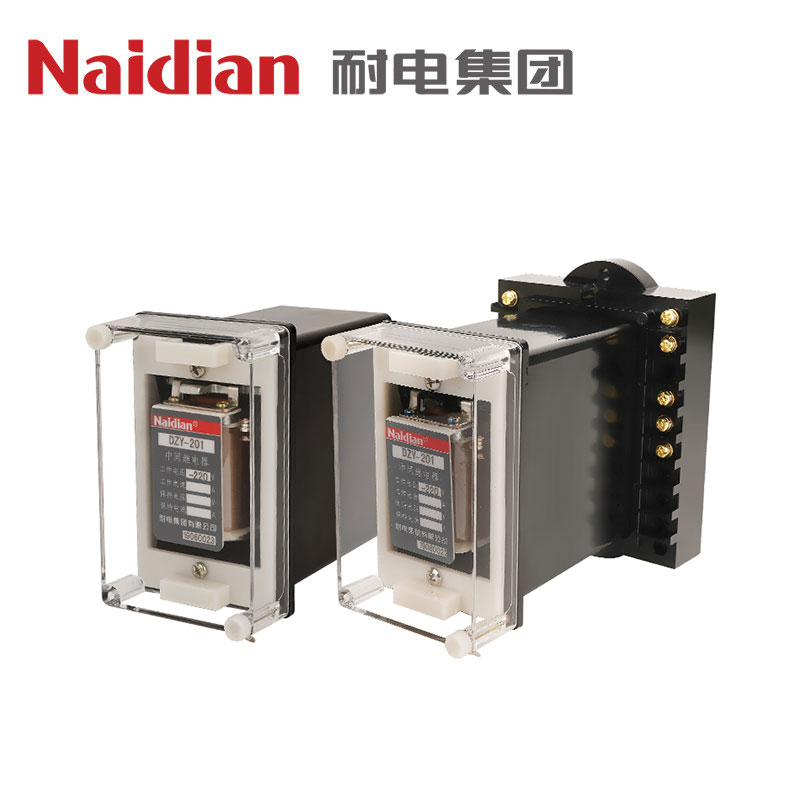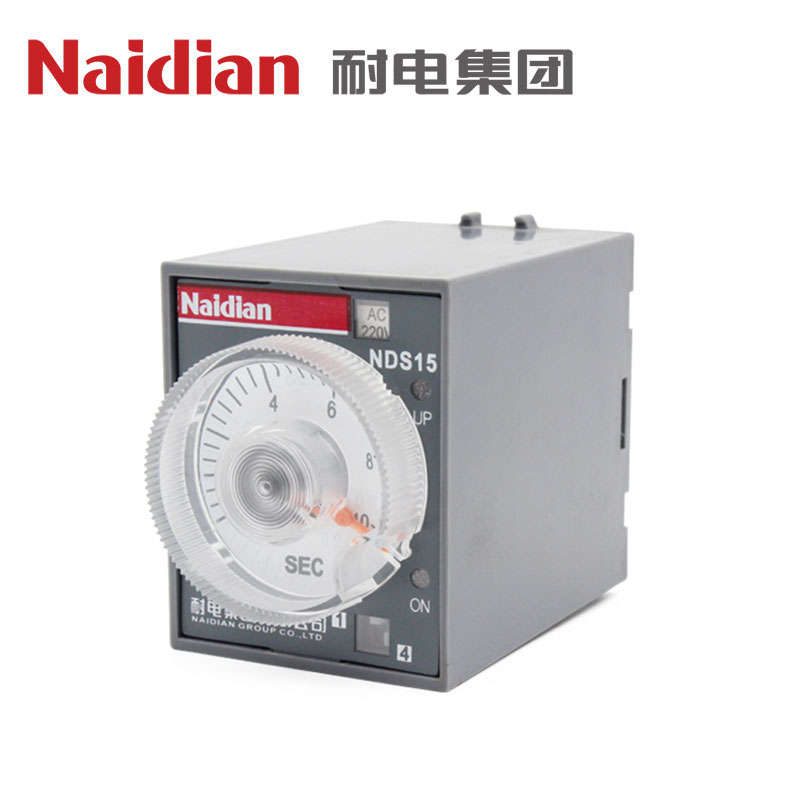Relay manufacturers share the difference between relays and circuit breakers, contactors, switches, solid-state relays, mechanical relays, and ordinary relays
Relay manufacturers share the difference between relays and circuit breakers, contactors, switches, solid-state relays, mechanical relays, and ordinary relays. I believe many friends don't know it yet. Let's take a look now!
What is the difference between a relay and a circuit breaker?
The relay manufacturer tells you that the relay is a component that increases the contact capacity and the number of contacts for the control circuit. Of course, it can also control small electrical equipment within its allowable current. The circuit breaker is a load switch with short-circuit protection function and can directly control low-power electrical equipment.
There are many kinds of relays, which must be combined with actuators in the circuit. For example, a current relay will send a switch signal when the current it detects exceeds the set value, but it cannot disconnect the main circuit by itself, because Its control ability is poor, and the rated current of the contact is generally only about 5A, so this signal must be sent to the actuator, such as an AC contactor, and the six-current contactor controls the on and off of the main circuit.
The rated current of the circuit breaker is very large, which can directly control the on-off of the main circuit, and the detection circuit is inside the circuit breaker. When a certain parameter exceeds the set value, it will cut off the circuit by itself.
The difference between relays and contactors
1. The effect is different
The relay manufacturer warmly reminds us that the primary function of the relay is signal detection, transmission, conversion, or processing. The circuit current it switches on and off is generally small, and it is generally used in the control circuit to control weak signals.
The primary function of the contactor is to turn on or off the main circuit. The main circuit refers to whether a circuit works or not and is marked by whether the circuit is connected. The main circuit concept corresponds to the control circuit. Generally, the current passing through the main circuit is larger than that of the control circuit.
Large-capacity contractors generally have arc extinguishing covers. The contact capacity of the relay generally does not exceed 5A, the contact capacity of the small relay is generally only 1A or 2A, and the contact capacity of the contactor is the smallest 9A; the contacts of the contactor generally have three pairs of main contacts (main contacts The heads are normally open contacts) and there are several pairs of auxiliary contacts.
The contacts of the relay are generally not divided into main and auxiliary; the contacts of the relay are sometimes set in pairs, that is, the normally open contacts and the normally closed contacts are combined, and the contractors are not set in pairs; the relay will be set in pairs for specific needs. Combined with other equipment, it is designed into time relays, counters, pressure relays, etc., which have additional functions, but contractors generally do not.
2. The contact opening and closing are different
In addition, the contactor is used to turn on or off the load with high power. It is used in the (power) main circuit. The main contact can have a chain contact to indicate the opening and closing of the main contact. Relays are generally used in electrical control circuits to expand the contact capacity of micro or small relays to drive larger loads.
For example, the contacts of the relay can be used to connect or disconnect the coil of the contactor. Generally, relays have more opening and closing contacts. Of course, relays can also perform some special functions, such as logic operations, through proper connection.
3. Arc extinguishing device
One has one and the other does not: looking at contactors and relays, one of the most important differences is that contractors have arc extinguishing devices, while relays do not.
What is the difference between a relay and a switch?
relay. It is an electric control element, and it is an electrical appliance that causes the controlled quantity to undergo a predetermined step change in the electrical output circuit when the change of the input quantity (excitation quantity) meets the specified requirements. It has an interactive relationship between the control system (also known as the input loop) and the controlled system (also known as the output loop). Usually used in automatic control circuits, it is an "automatic switch" that uses a small current to control the operation of a large current. Therefore, it plays the role of automatic adjustment, safety protection, and conversion circuit in the circuit.
3. A switch refers to an electronic component that can open a circuit, interrupt the current, or cause it to flow to other circuits. The most common switches are human-operated electromechanical devices that have one or more electrical contacts. The "closed" of the contact means that the electronic contact is conductive and allows the current to flow; the "open" of the switch means that the electronic contact is not conductive and forms an open circuit, and the current is not allowed to flow.
The Difference Between Solid State Relays and Mechanical Relays
The contacts of solid-state relays are electronic, such as MOS tubes or silicon-controlled rectifiers, which will not be affected by arcs, so there is almost no life limit under the premise of reasonable use. However, the excessive current of the electronic device needs to be connected to a heat sink, and the larger the current, the larger the heat sink used.
The contacts of mechanical relays are mechanical, and electric sparks will be generated when breaking large currents, which is the so-called arc. Arc suppression and suppression are industry problems. Contacts will be corroded if they work in an arc environment for a long time. Shorten the service life, so mechanical relays will be marked with service life.
Relay manufacturers tell you the difference between solid-state relays and ordinary relays
1. Structural difference
Electromagnetic relays work through the attraction force between the electromagnet core and armature caused by the circuit in the input circuit; solid state relays use electronic components to perform their functions, there are no mechanical moving parts, and the input and output are isolated.
2. Operating environment
In the relationship between temperature, humidity, atmospheric pressure (altitude), dust pollution, chemical gas, and electromagnetic interference, electromagnetic relays are generally inferior to solid-state relays.
3. Differences in working methods
The electromagnetic relay uses the principle of electromagnetic induction to adjust the on-off of the circuit through the force of the electromagnet. Therefore, when the coil is connected to DC, the contacts can be connected to AC and DC; solid-state relays rely on the electrical, magnetic, and optical properties of semiconductor devices and electronic components to complete their isolation and relay switching functions. Therefore, they are divided into DC input-AC output type, DC input-branch output type, AC input-AC output type, and AC input-DC output type.
4. Differences in working status
Electromagnetic relays rely on the suction force between the armatures to turn on and off the circuit, so they respond slowly, are noisy, and have a limited service life; solid state relays respond quickly, are noiseless, and have a long service life.
5. Differences in electrical performance
Electromagnetic relays are equivalent to corresponding solid-state relays. The former is simple to drive, but consumes a lot of power, has good isolation, and has a good ability to withstand short-term overload. It is not as good as the latter when adjusting high current and high power, and the service life is not as good as the latter when adjusting circuits with complex responses.
This concludes today's relay introduction. The above is the difference between solid-state relays and ordinary relays briefly introduced by relay manufacturers. The relay is an automatic switching element with an isolation function. It is widely used in remote control, telemetry, communication, automatic adjustment, mechatronics, and power electronic equipment. It is one of the most important adjustment elements. I hope that the Naidian relay manufacturer will tell can solve the problem for you.



